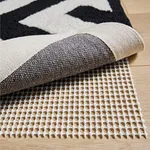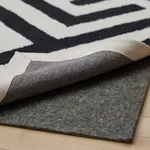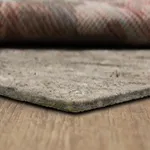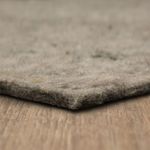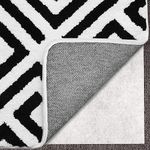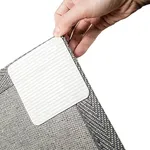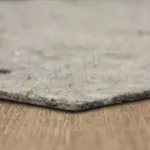Buying Guide for the Best Outdoor Rug Pad
Choosing the right outdoor rug pad is essential for both the longevity of your outdoor rug and the safety and comfort of your outdoor space. A good rug pad not only keeps your rug in place but also provides cushioning, protects the surface underneath, and helps with drainage and air circulation. When shopping for an outdoor rug pad, it's important to consider the specific needs of your outdoor area, the type of rug you have, and the weather conditions your space is exposed to.MaterialThe material of an outdoor rug pad determines its durability, grip, and resistance to weather. Common materials include rubber, PVC, and felt. Rubber and PVC are popular for outdoor use because they resist moisture and mildew, while felt is less common outdoors due to its tendency to absorb water. If your area is exposed to rain or humidity, opt for a pad made from synthetic rubber or PVC, as these materials are designed to withstand the elements and prevent mold growth. If your space is covered and dry, you might have more flexibility in material choice.
ThicknessThickness refers to how much cushioning the rug pad provides. Thinner pads (around 1/8 inch) are best for areas where you want the rug to sit close to the ground and avoid tripping hazards, such as under doors or in high-traffic areas. Thicker pads (up to 1/4 inch or more) offer more comfort and can help with uneven surfaces, but may raise the rug higher off the ground. Consider how much comfort you want underfoot and whether door clearance or tripping is a concern in your space.
Grip/Non-Slip PropertiesGrip or non-slip properties refer to how well the pad keeps your rug from sliding around. Some pads have a textured or rubberized surface to hold the rug in place, which is especially important in windy outdoor areas or on smooth surfaces like tile or concrete. If your rug is in a spot where it might move or bunch up, prioritize a pad with strong non-slip features. For rugs placed under heavy furniture, grip may be less critical.
Water Resistance and DrainageWater resistance and drainage are crucial for outdoor rug pads, as they help prevent water from pooling under the rug and causing mold or mildew. Some pads are designed with holes or a mesh structure to allow water to pass through easily. If your outdoor area is exposed to rain or moisture, look for a pad that specifically mentions water resistance and drainage. In covered or dry areas, this feature is less important.
Size and CustomizabilityThe size of the rug pad should match your rug as closely as possible, ideally being slightly smaller than the rug itself so the edges of the rug lay flat. Many pads can be trimmed with scissors for a custom fit. When choosing a pad, check if it can be easily cut to size, especially if your rug has an unusual shape or size. This ensures the pad stays hidden and provides even support.
